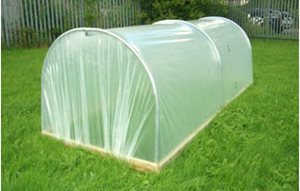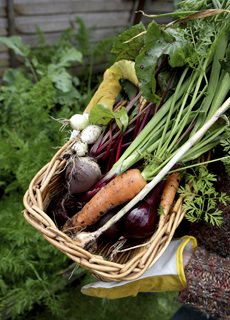Have you always wanted to create your own vegetable garden at home but never known where to start? Whether you’re thinking of a fresh approach to sustainable living or you’re keen to become a gardener, this is a great opportunity to enjoy fresh food without having to head to the supermarket.
So, where to begin? To find out the best time for growing vegetables, what type of fruit and veg to start out with and other top tips to make sure your brand new veggie patch is glorious, read on.
How to set up your vegetable garden
To begin, you’ll need to find the perfect spot for your vegetable garden.
How much light?
Some types of veg enjoy shade, but most thrive in the sun, so it’s important that you find a corner that gets a lot of light throughout the day. Be sure to keep your patch away from trees or the shade of your home as crops won’t grow as well in these conditions.
Keep it level
As well as needing access to light, your crops will need to be on level ground. By choosing the flattest surface, you are giving your veg access to an even amount of nutrients.
 Watch out for the weather
Watch out for the weather
Another factor to consider is the weather conditions. We’ve seen some extreme weather in recent years, and keeping crops sheltered as much as possible is essential for a successful harvest. Investing in protective equipment such as cloches can help.
Give them a drink
You’ll also need to make sure your vegetables have access to water. If you decide to place your vegetables in a polytunnel, there are several ways to conserve water for your crops.
Once you have found the perfect spot, you can begin to plan out when you’ll be able to grow your own veg. Focus on each area in turn, digging the soil to make sure there are no weeds and that it’s clear of stones. When it’s ready, you can start sowing your seeds.
When is the best time to grow your own vegetables?
Starting a vegetable garden is all about timing. Now you have your patch in the perfect spot, you need to make sure you know when to begin. Understanding when to plant vegetables, from the best time of year to sow seeds to getting the harvesting just right, is key to making sure your hard work pays off.
 While you can begin growing vegetables at any time of year, the spring season is the best time to get things underway, while late summer/early autumn is usually when your crops will be harvested. However, each vegetable is different, so you might find that you need to get to work at different times, depending on what you’re growing.
While you can begin growing vegetables at any time of year, the spring season is the best time to get things underway, while late summer/early autumn is usually when your crops will be harvested. However, each vegetable is different, so you might find that you need to get to work at different times, depending on what you’re growing.
For example, if you decide to start with carrots, you can start sowing these in March, but they grow quickly compared with other vegetables, so you could find that they’re ready to harvest in June. This is very different to Brussels sprouts, which may need to be sown in March and harvested as late as October. When growing fruit and veg in a polytunnel, the growing season can start earlier and last longer, so you will need to consider sowing, planting and harvesting times under cover – Our printable yearly planner will help.
A lot of the process when you’re starting out with your own vegetable patch is trying different things and also knowing what needs to start indoors or under cover, and what can be sown directly into the ground. Read the instructions carefully and do some research into when is best to sow seeds.
Also, if you’re growing several crops at once, be sure to keep track of each vegetable so you know when each needs harvesting. Again, this is all about timing.
What to grow
As a total beginner, it’s likely that you’ll be looking for some easy veggies to grow. Starting with low-maintenance plants is a great way to begin growing vegetables at home. When you master these, you can steadily build up to other types of veg. Here are some great starter vegetables and leaves to help you get into the growing process.
Radishes
Bright and peppery, radishes are a punchy addition to a summer salad. As well as tasting delicious, they are easy to grow. They can be sown directly into the ground throughout the summer and harvested after a month, making them a quick and easy vegetable to begin with. In a polytunnel, radishes can be sown and harvested almost all year round.
Peas
Sow your peas into the ground between March and June and they’ll be ready for harvest from June to August. Be sure to add some canes to support the stems and it’s worth investing in a fruit and veg cage for added protection. In a polytunnel, you can sow peas over winter for a spring crop.
Onions
Onions are one of the least needy crops to maintain. Add the bulbs to well-drained soil in spring and when the foliage turns yellow in late autumn – or late summer in a polytunnel - you’ll know it’s time to lift them out. They just need to dry in the sun before being stored.
Try it yourself
The best way to start your own vegetable garden is to take the plunge and have the confidence to try everything. After you’ve laid the groundwork by finding the best spot and worked out the equipment you’ll need, you are in a great position to take charge of your veggie patch.